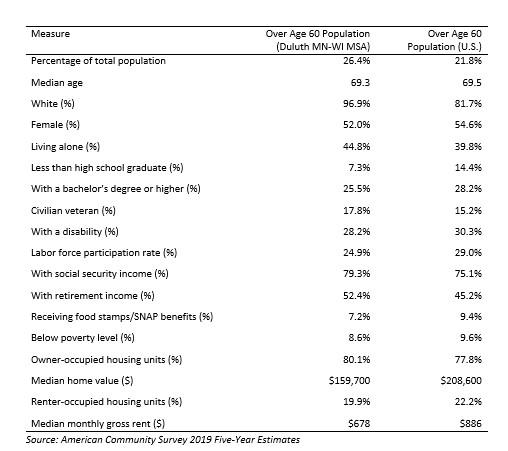The COVID-19 pandemic has disrupted how Americans view their relationship with work, but older workers have been especially impacted. Some were unexpectedly laid off, many had to start working from home, which increased their technology skills but isolated them from their coworkers, while others had to balance the pressure to work in person while protecting themselves from COVID-19. Additionally, many decided to choose not to go back to work or retire early, taking part in the “Great Resignation.” According to the Bureau of Labor Statistics, it is estimated that 50% of the 55 and older population said they were out of the labor force due to retirement.
While many of the older workers who left the labor force during COVID-19 may never return, there is likely a large segment of older individuals who will return to work in the coming years, either for financial or social reasons. As noted by many researchers (Li and Mutchler, 2020; Abraham and Houseman, 2020; and probably many others), late-career workers may find it difficult to adjust to the post-COVID workforce, as they face special challenges to finding new work and are more likely to be seen by employers as expensive and lacking necessary skills.
In partnership with Dr. Lacey Loomer and Dr. Kim Dauner from UMD’s Health Care Management department in the Labovitz School and the Duluth Workforce Development Board, the BBER recently submitted a grant proposal to the University of Minnesota’s Life Course Center. The aim of the proposal is to better understand the barriers, needs, and wants of older adults who want to engage in paid and unpaid work and to assess how workforce programs can better serve older adults.
In light of that proposal, this blog post takes a deeper dive into the demographic, economic, and household characteristics of the population of people who are age 60+ in the Duluth MN-WI MSA (which includes St. Louis, Carlton, and Lake Counties in Minnesota and Douglas County in Wisconsin) as compared with the same population nationwide to help inform employers of the unique challenges and opportunities that our area faces in serving its older citizens.
As shown in the table, a much higher share of the Duluth MSA population is over age 60 (26.4%) compared with the national average (21.8%), and that population has some unique characteristics compared to what is typical nationwide. First, the over age 60 population in the Duluth region is nearly all white. Older adults in the Duluth MSA are more likely to live alone, more likely to have a high school degree, and less likely to have a bachelor’s degree or higher than the national average. Our region has a higher share of civilian veterans and a lower labor force participation rate. A higher share of older residents in the Duluth region reported receiving social security and retirement than is typical nationwide. Older adults in the Duluth MSA have slightly lower poverty rates and are slightly less likely to receive food stamps or SNAP benefits. Older adults in the Duluth MSA are more likely to own their homes, but the median home value tends to be lower than is typical nationwide. Median gross rent is also lower in our region.
In summary, older adults make up a larger share of the population in the Northeast region overall and have a lower labor force participation rate than is typical nationwide. This population has some unique characteristics that might make them less likely to want to re-join the labor force. For example, 79% receive social security income, and more than half receive retirement income. Both of these values are higher than is typical nationwide. However, our older residents are more likely to live alone, suggesting they may be more socially isolated. This might make work an appealing option for some. Understanding the demographic traits and characteristics of this population is important as we consider how to design workforce programs that support older adults who wish to participate in the workforce.

